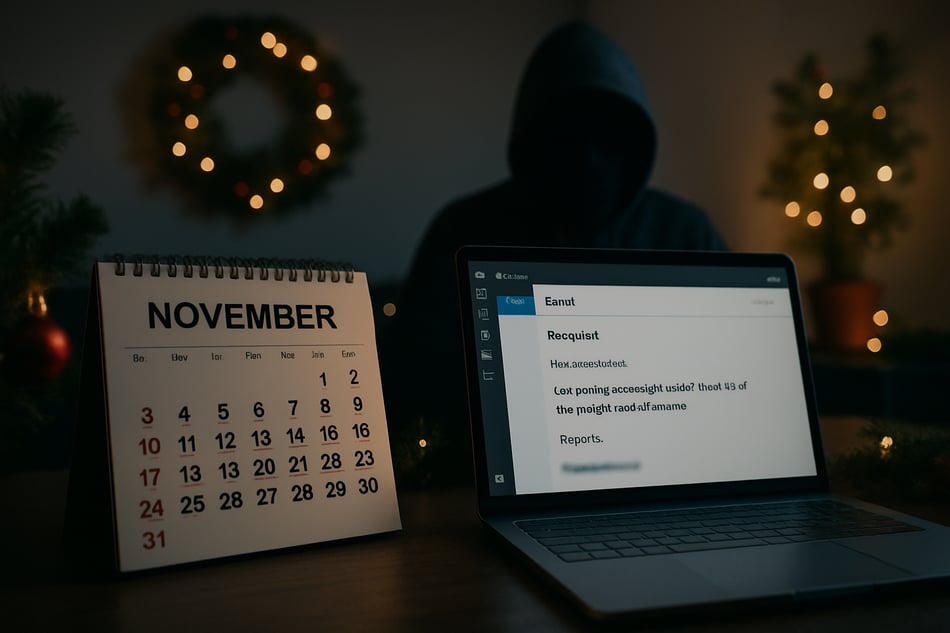The Cyber Criminal’s Calendar: When Your Business Is Most at Risk

Santa isn't the only one who knows when you are sleeping...
Cybercriminals aren’t just opportunists. They’re planners. They know when your team is distracted, when your inbox is full, and when your IT staff is running on fumes. And they wait patiently for the right moment.
Across decades in IT and cybersecurity, I’ve seen patterns. Certain times of year consistently open up serious gaps in even well-managed organizations. These aren’t just “busy seasons.” They’re when your risk of being phished, spoofed, or breached quietly spikes.
Here’s when to be extra alert and how to shore up your defenses before a criminal makes the first move.
1. Tax Season: A Goldmine for Social Engineering
Between February and April, attackers ramp up phishing campaigns designed to look like tax correspondence. They impersonate the IRS, payroll vendors, and even internal HR reps. One mistyped password on a spoofed link, and suddenly you’ve got W2s exposed or an executive account compromised.
Even worse, your staff are not the only ones at risk. Your vendors, contractors, and finance teams are targets, too.
What to do:
-
Train staff on the specific signs of tax-season scams.
-
Flag all finance-related emails that contain links or attachments.
-
Confirm all direct deposit or payment changes via phone or in person, not email.
2. Pre- and Post-Vacation Windows
We all check out a bit before a vacation. Attackers know this, too. Just before and after peak vacation times (summer, long weekends, school breaks), cybercriminals send messages posing as coworkers or executives. The scam often starts with a short “Are you available?” followed by urgent requests for gift cards, wire transfers, or credentials.
These attacks rely on poor coverage and reduced scrutiny. They work best when someone is out of the office and no one wants to bother the boss.
What to do:
-
Set clear policies about handling requests for money or credentials, especially over email or text.
-
Use out-of-office alerts that don’t give away internal structure or senior staff availability.
-
Run phishing simulations right before known vacation times.
3. Thanksgiving to New Year’s: Prime Time for Impersonation
From late November through December, attackers are at their busiest. Why? Because you’re not.
Staff are out, projects are paused, and many businesses operate with skeleton crews. This is when criminals impersonate executives to push urgent financial requests or prey on junior staff covering for others.
Gift card scams. Fake donation drives. End-of-year “bonuses” requiring banking updates. These are just a few tactics that flourish in the holiday fog.
What to do:
-
Implement a “second set of eyes” rule for any financial requests in December.
-
Lock down shared mailboxes and administrative tools.
-
Notify your staff in advance: expect more phishing and triple-check requests, even if they seem legitimate.
Cybercrime Doesn’t Follow the Calendar, But They Watch Yours Closely
At Solve iT, we help small businesses in the Carolinas and beyond identify these patterns and build real protections around them. From phishing simulations to breach response planning, our goal is simple: ensure your systems and people are ready when the criminals appear.
If your cybersecurity defenses are the same all year long, they’re not ready when it matters most.
Book your free threat assessment today. It includes a dark web scan, phishing test, and cyber insurance readiness check, built to keep your business running smoothly during every season.

